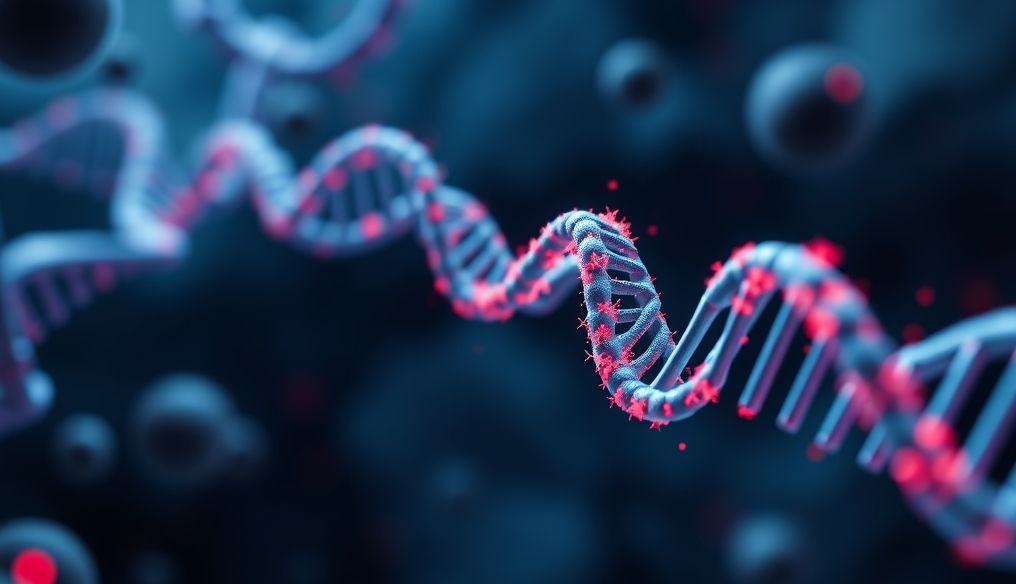El Gen c-MYC en caninos: Un regulador clave en la patogénesis tumoral y posible blanco terapéutico
c-MYC gene in canines: A key regulator in tumor pathogenesis and a potential therapeutic target
DOI:
https://doi.org/10.19137/cienvet.v27.9045Palabras clave:
c-MYC, Oncogén, Neoplasias caninas, Terapia dirigidaResumen
Esta revisión tiene como objetivo analizar el papel del oncogén c-MYC en la patogénesis de neoplasias caninas y su potencial como diana terapéutica en el contexto de la oncología comparada. El oncogén c-MYC actúa como un regulador clave en procesos celulares como proliferación, diferenciación, metabolismo y apoptosis. Su desregulación, mediada principalmente por amplificaciones génicas o reordenamientos cromosómicos, se ha asociado con diversas neoplasias caninas, incluyendo Tumor Venéreo Transmisible (TVT), tumores mamarios, osteosarcomas, y carcinomas prostáticos y oculares. En el caso del TVT, la inserción de elementos LINE-1 en c-MYC lo resalta como un marcador diagnóstico relevante. La sobreexpresión de c-MYC, vinculada con agresividad y rápida progresión tumoral, lo posiciona como un objetivo terapéutico prometedor. Si bien su inhibición directa permanece técnicamente desafiante, estrategias alternativas buscan modular su actividad a través de la inhibición de vías upstream o la interferencia en sus interacciones proteicas. En el marco de la oncología comparada, los modelos caninos representan un recurso esencial para investigar mecanismos oncogénicos comunes y evaluar estrategias terapéuticas con posibles aplicaciones traslacionales en humanos. Por tanto, el estudio de c-MYC es crucial en la investigación del cáncer tanto en medicina veterinaria como humana
Descargas
Citas
Dang CV, et al. Function of the c-Myc oncogenic transcription factor. Experimental Cell Research, 1999; 253(1), 63–77. Disponible en: https://doi.org/10.1006/excr.1999.46
Miyamoto MM, Porter CA, Goodman M. c-myc gene sequences and the phylogeny of bats and other eutherian mammals. Systematic Biology,2000; 49(3). Disponible en: https://doi.org/10.1080/10635159950127367
Mortlock SA, et al. Genomic Analysis of Lymphoma Risk in Bullmastiff Dogs. Veterinary Sciences, 2023;10(12). Disponible en: https://doi.org/10.3390/vetsci10120703
Manzoor S et al. C-Myc has altered expression in canine and feline tumors. Pakistan Journal of Zoology, 2017; 49(6) Disponible en: https://doi.org/10.17582/journal.pjz/2017.49.6.2147.2152
Harmelin A et al. Use of a murine xenograft model for canine transmissible venereal tumor. American Journal of Veterinary Research, 2001; 62(6). Disponible en: https://doi.org/10.2460/ajvr.2001.62.907
Katzir N et al. “Retroposon” insertion into the cellular oncogene c-myc in canine transmissible venereal tumor. Proceedings of the National Academy of Sciences of the United States of America, 1985; 82(4), 1054–1058. Disponible en: https://doi.org/10.1073/pnas.82.4.1054
Liao K.-W et al. Identification of canine transmissible venereal tumor cells using in situ polymerase chain reaction and the stable sequence of the long interspersed nuclear element. In J Vet Diagn Invest, 2003a (Vol. 15).
Ojeda J, Alfaro A, Moroni M, Camacho V, Martínez J & Noro M. Tumor venéreo transmisible diseminado sobre piel, párpados y pene en un perro. Reporte de caso. Archivos de Medicina Veterinaria,2016; 48(1). Disponible en: https://doi.org/10.4067/S0301-732X2016000100015
Borge KS. Canine mammary tumours are affected by frequent copy number aberrations, Including amplification of myc and loss of pten. PLoS ONE, 2015;10(5). Disponible en: https://doi.org/10.1371/journal.pone.0126371
Gola C. The mitotic regulator polo-like kinase 1 as a potential therapeutic target for c-Myc-overexpressing canine osteosarcomas. Veterinary and Comparative Oncology, 2022; 20(4). Disponible en: https://doi.org/10.1111/vco.12854
Fonseca-Alves CE, Kobayashi PE, Laufer-Amorim R. Evaluation of NKX3.1 and C-MYC expression in canine prostatic cancer. Research in Veterinary Science, 2018; 118.Disponible en: https://doi.org/10.1016/j.rvsc.2018.04.001
Lopes RA, Cardoso TC, Luvizotto MCR, de Andrade AL. Occurrence and expression of p53 suppressor gene and c-Myc oncogene in dog eyelid tumors. Veterinary Ophthalmology, 2010; 13(2), 69–75. Disponible en: https://doi.org/10.1111/j.1463-5224.2009.00753.x
Ahmad W et al. Assessment of tumor-induced pain and C-reactive protein levels in dogs with canine transmissible venereal tumors. Turkish Journal of Veterinary and Animal Sciences, 2018; 42(5), 429–434. Disponible en: https://doi.org/10.3906/vet-1805-54
Frazier KS, Hines ME, Hurvitz AI, Robinson PG, Herron AJ. Analysis of DNA Aneuploidy and c-myc Oncoprotein Content of Canine Plasma Cell Tumors Using Flow Cytometry. Veterinary Pathology, 1993; 30(6), 505–511. Disponible en: https://doi.org/10.1177/030098589303000603
Katavolos P et al. Preclinical Safety Assessment of a Highly Selective and Potent Dual Small-Molecule Inhibitor of CBP/P300 in Rats and Dogs. Toxicologic Pathology, 2020; 48(3). Disponible en:https://doi.org/10.1177/0192623319898469
Sibuh BZ, Khanna S, Taneja P, Sarkar P, Taneja NK. Molecular docking, synthesis and anticancer activity of thiosemicarbazone derivatives against MCF-7 human breast cancer cell line. Life Sciences, 2021; 273. Disponible en: https://doi.org/10.1016/j.lfs.2021.119305
Beffagna G et al. Circulating cell-free DNA in dogs with mammary tumors: Short and long fragments and integrity index. PLoS ONE,2017; 12(1). Disponible en: https://doi.org/10.1371/journal.pone.0169454
Lima CR et al. Insertion of the LINE-1 element in the C-MYC gene and immunoreactivity of C-MYC, p53, p21 and p27 proteins in different morphological patterns of the canine TVT. Arquivo Brasileiro de Medicina Veterinaria e Zootecnia, 2016; 68(3).Disponible en: https://doi.org/10.1590/1678-4162-8750
Reuse S, Maenhaut C, Dumont JE. Regulation of protooncogenes c-fos and c-myc expressions by protein tyrosine kinase, protein kinase C, and cyclic AMP mitogenic pathways in dog primary thyrocytes: A positive and negative control by cyclic AMP on c-myc expression. Experimental Cell Research,1990; 189(1). Disponible en: https://doi.org/10.1016/0014-4827(90)90253-7
Liao K.-W et al. Identification of canine transmissible venereal tumor cells using in situ polymerase chain reaction and the stable sequence of the long interspersed nuclear element. In J Vet Diagn Invest (2003b) (Vol. 15).
Marei HE et al. p53 signaling in cancer progression and therapy. In Cancer Cell International (Vol. 21, Issue 1). BioMed Central Ltd.2021; Disponible en: https://doi.org/10.1186/s12935-021-02396-8
Mrdenovic S et al, Targeting Burkitt lymphoma with a tumor cell–specific heptamethine carbocyanine-cisplatin conjugate. Cancer, 2019; 125(13). Disponible en: https://doi.org/10.1002/cncr.32033
Inoue M, & Shiramizu K. Immunohistochemical detection of p53 and c-myc proteins in canine mammary tumours. Journal of Comparative Pathology, 1999; 120(2). Disponible en: https://doi.org/10.1053/jcpa.1998.0268
Ni T et al. PTBP1 drives c-Myc-dependent gastric cancer progression and stemness. British Journal of Cancer, 2023; 128(6), 1005–1018. Disponible en: https://doi.org/10.1038/s41416-022-02118
Beebe E el al. Proteomic profiling of canine fibrosarcoma and adjacent peritumoral tissue. Neoplasia (United States), 2023; 35. Disponible en: https://doi.org/10.1016/j.neo.2022.100858
Kobayashi M et al. Canine intestinal mast cell tumor with c-kit exon 8 mutation responsive to imatinib therapy. Veterinary Journal, 2012; 193(1). Disponible en: https://doi.org/10.1016/j.tvjl.2011.10.027
Kobayashi M et al. Imatinib-associated tumour response in a dog with a non-resectable gastrointestinal stromal tumour harbouring a c-kit exon 11 deletion mutation. Veterinary Journal, 2013; 198(1). Disponible en: https://doi.org/10.1016/j.tvjl.2013.05.03
Fonseca-Alves CE et al. Alterations of C-MYC, NKX3.1, and E-cadherin expression in canine prostate carcinogenesis. Microscopy Research and Technique, 2013; 76(12). Disponible en: https://doi.org/10.1002/jemt.22292
de Nardi AB et al. Diagnosis, Prognosis and Treatment of Canine Cutaneous and Subcutaneous Mast Cell Tumors. Cells, 2022; 11(4), 618. Disponible en: https://doi.org/10.3390/cells11040618
Varshney J, Scott MC, Largaespada DA, Subramanian S. Understanding the osteosarcoma pathobiology: A comparative oncology approach. In Veterinary Sciences 2016; (Vol. 3, Issue 1).
Lopez CM, Yu PY, Zhang X, Yilmaz AS, London CA, Fenger JM. MiR-34a regulates the invasive capacity of canine osteosarcoma cell lines. PLoS ONE,2018; 13(1).
Han L, Fu Q, Deng C, Luo L, Xiang T, Zhao H. Immunomodulatory potential of flavonoids for the treatment of autoimmune diseases and tumour. Scandinavian Journal of Immunology, 2022; 95(1). https://doi.org/10.1111/sji.13106
Shiota (Sato) Y et al. Derivation of a new model of lung adenocarcinoma using canine lung cancer organoids for translational research in pulmonary medicine. Biomedicine and Pharmacotherapy, 2023; 165.
Fonseca-Alves CE et al. Alterations of C-MYC, NKX3.1, and E-cadherin expression in canine prostate carcinogenesis. Microscopy Research and Technique,2013; 76(12). https://doi.org/10.1002/jemt.22292
Fletcher S, Prochownik EV.Small-molecule inhibitors of the Myc oncoprotein. In Biochimica et Biophysica Acta - Gene Regulatory Mechanisms2015; (Vol. 1849, Issue 5, pp. 525–543). Elsevier B.V.
Lourenco C. et al. MYC protein interactors in gene transcription and cancer. Nature Reviews Cancer,2021; 21(9), 579–591.
Parker T et al. Rhinoscopic Appearance and Clinical Features of a Nasal Transmissible Venereal Tumor in a Dog. Topics in Companion Animal Medicine, 2021; 42. https://doi.org/10.1016/j.tcam.2020.100476
Das U, Kumar Das A. Review of canine transmissible venereal sarcoma. In Veterinary Research Communications, 2000; Vol. 263(145).
Jung I et al. Relationship of endothelial area with VEGF-A, COX-2, maspin, c-KIT, and DOG-1 immunoreactivity in liposarcomas versus non-lipomatous soft tissue tumors. International Journal of Clinical and Experimental Pathology,2015; 8(2).
Ye Y, Sun WW, Xu RX, Selmic LE, Sun M. Intraoperative assessment of canine soft tissue sarcoma by deep learning enhanced optical coherence tomography. Veterinary and Comparative Oncology, 2021; 19(4), 624–631. https://doi.org/10.1111/vco.12747
Lumsden AL, Young RL, Pezos N, Keating DJ. Huntingtin-associated protein 1: Eutherian adaptation from a TRAK-like protein, conserved gene promoter elements, and localization in the human intestine. BMC Evolutionary Biology, 2016; 16(1).
Elbadawy M et al. Anti-tumor effect of trametinib in bladder cancer organoid and the underlying mechanism. Cancer Biology and Therapy, 2021; 22(5–6).
Abugomaa A et al. Anti-cancer activity of Chaga mushroom (Inonotus obliquus) 2023; 14.
Usher SG, Radford AD, Villiers EJ, Blackwood L. RAS, FLT3, and C-KIT mutations in immunophenotyped canine leukemias. Experimental Hematology, 2009; 37(1).
Usmanova N, Tomilin N, Zhivotovsky B, Kropotov A. Transcription factor GABP/NRF-2 controlling biogenesis of mitochondria regulates basal expression of peroxiredoxin v but the mitochondrial function of peroxiredoxin v is dispensable in the dog. Biochimie, 2011; 93(2). https://doi.org/10.1016/j.biochi.2010.10.002
Katavolos P et al. Preclinical Safety Assessment of a Highly Selective and Potent Dual Small-Molecule Inhibitor of CBP/P300 in Rats and Dogs. Toxicologic Pathology, 2020; 48 (3).
Medley K, Li Z, Lin C, Bearss DJ, Vankayalapati H. Development of BLX-3030, a potent and selective inhibitor of CDK9 for the treatment of NMYC-driven NEPCS. Journal of Clinical Oncology, 2023; 41(16_suppl). https://doi.org/10.1200/jco.2023.41.16_suppl.e17067
Schiffman JD, Breen M. Comparative oncology: what dogs and other species can teach us about humans with cancer. Philosophical Transactions of the Royal Society B: Biological Sciences, 2015; 370(1673), 20140231.
Avery AC.The Genetic and Molecular Basis for Canine Models of Human Leukemia and Lymphoma. In Frontiers in Oncology 2020; 10.
Cowing BE, Saker KE. Polyunsaturated fatty acids and epidermal growth factor receptor/mitogen-activated protein kinase signaling in mammary cancer. In Journal of Nutrition,2001; 131 (4).

Publicado
Número
Sección
Licencia
Derechos de autor 2025 Arnulfo Villanueva Castillo, Ruby Sandy Moreno Mejía, Carlos Gerardo Castillo Sosa , Cesar Feliciano Pastelín Rojas , Hermilo Lucio Castillo, Fatima Matamoros González , Alexis Cruz Espinosa , Arturo Órnelas Luna

Esta obra está bajo una licencia internacional Creative Commons Atribución-NoComercial-CompartirIgual 4.0.
Al momento de enviar sus contribuciones, los colaboradores deberán declarar , de manera fehaciente, que poseen el permiso del archivo o repositorio donde se obtuvieron los documentos que se anexan al trabajo, cualquiera sea su formato (manuscritos inéditos, imágenes, archivos audiovisuales, etc.), permiso que los autoriza a publicarlos y reproducirlos, liberando a la revista y sus editores de toda responsabilidad o reclamo de terceros , los autores deben adherir a la licencia Creative Commons denominada “Atribución - No Comercial CC BY-NC-SA”, mediante la cual el autor permite copiar, reproducir, distribuir, comunicar públicamente la obra y generar obras derivadas, siempre y cuando se cite y reconozca al autor original. No se permite, sin embargo, utilizar la obra con fines comerciales.







.jpg)

4.png)


7.png)






